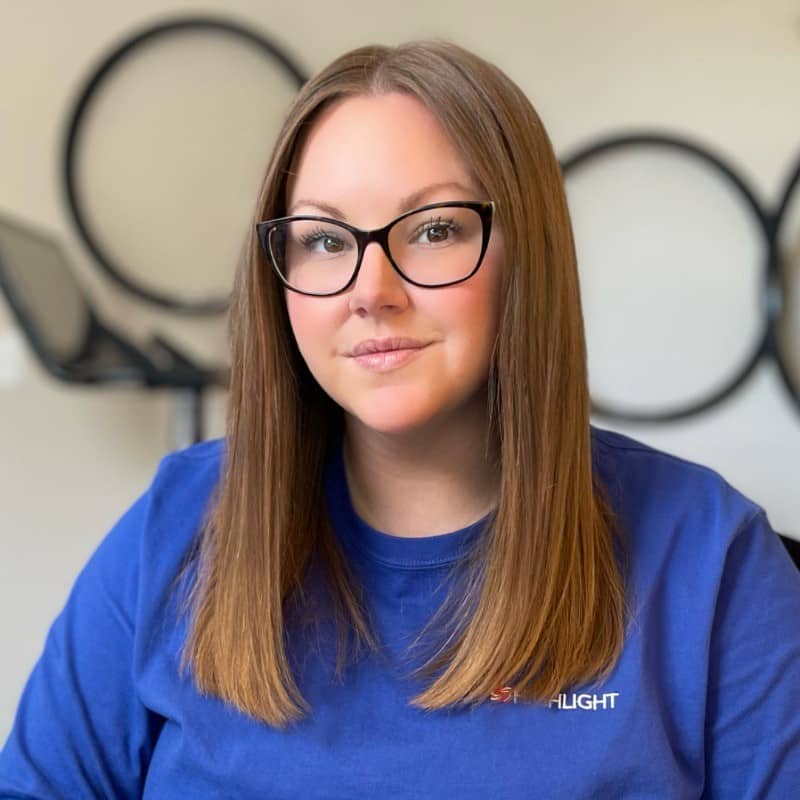When writing a proposal, the daunting stare of a blank page can send shivers down your spine. 👻
But is it really the blank page that scares you?
With so much riding on your words, this paralyzing fear might stem from not knowing how to effectively communicate why your solution is the best choice (especially when you’re under the pressure of a looming deadline).
That’s why we asked members of popular proposal communities, Response Insiders and Proposal Industry Experts, about which steps in proposal writing they take to overcome writer’s block, engage the evaluator, and make the shortlist.
But First, Why Should You Follow Basic Steps in Proposal Writing?
Every proposal writer should have a step by step plan—whether you’re writing a solicited proposal, project proposal, business proposal, or any type of proposal. Here are 4 reasons why:
1. It Makes Time for Strategy, Upfront
A proposal writing process prevents you from haphazardly describing your proposed solution by the seat of your pants. How? It allows you to bake in a step for content strategy from the start—which you can use to keep your team aligned until the final edit.
2. You’ll Always Know How to Start a Proposal
When you liberate yourself from reinventing the wheel, it makes writing proposals less overwhelming. A well-established, repeatable process serves as your reliable anchor to kickstart your brain—even when you haven’t had enough coffee yet.
3. A Proposal Writing Process Saves Time
You can shave hours off writing with a content plan and proposal outline. That’s because a systematic approach reduces time wasted waffling over words, ensuring every moment spent is laser-focused on your narrative.
4. It Creates Consistency for Your Proposal Team
When everyone knows what to do and when, they can jump right into working on the key components of the proposal (instead of asking you for direction). Plus, it creates a smooth onboarding experience for new proposal writers you add to the team.
How to Write a Proposal in 8 Fundamental Steps (And Set Up Your Words for a Win)
Many proposal writers have a proposal writing process of their own. Some love a structured outline, others brain dump their notes. Some write an ugly first draft, others edit as they go. Whatever your process might be, it has to work for you.
To help get started, here are 8 fundamental steps you should follow in proposal writing, as recommended by your peers.
Step 1: Qualify the RFP Before Writing a Proposal
Writing a proposal with a high chance of winning can be exhilarating. 🤩
On the flip side, it can be demotivating to work on a proposal that you know has a slim chance of earning new business. (All those wasted redlines…)
That’s why it’s extremely important to avoid wasting your writing energy on proposals that will end up in the “no” pile. Julie McCoy and her team at DocuSign routinely disqualify 20-25% of requests for proposals.
“We don’t support requests where win rates are low. Instead, we focus our efforts on deals that will make the biggest impact on the business to ensure balance and feel like the work we do matters.”

✍️ How to put these words into action:
- Review the opportunity: Ask your sales team to complete an RFP intake form, which includes background information about the client (such as the company name, geographical region, and current pain points).
- Assess the RFP: Meet with the right stakeholders to discuss your RFP evaluation criteria, like customer fit, the cost of pursuing the opportunity, and whether you have the required resources available.
- Prioritize the proposal: After evaluating the RFP, add it to your priority list, start writing the proposal, or kindly say no if it’s not worth the effort.
Should You Write a Proposal? Consider These Important Factors 🤔
✓ Customer fit: Are they in your target market? How much do you know about their industry? Can you meet their needs without overhauling your product or service?
✓ Existing relationship: What’s their awareness level of your brand? Have you worked with this organization in the past? Do you know the decision-makers?
✓ Competitive landscape: Who are your top competitors? Does the RFP read like it’s made for the incumbent? Do you really measure up compared to them?
✓ Proposal timeline: Do you have enough time to write a great proposal? Is this one a priority over other proposals you have in progress?
✓ Team resources: Does your proposal team have the bandwidth? Do you have buy-in from the right internal stakeholders to meet this deadline?
✓ Opportunity value: What is the time and cost of pursuing this opportunity? By submitting a proposal, are you likely to meet your quarterly profit goals?
P.S. You can score an RFP for all of the above factors using this go/no-go decision template.
Step 2: Research Proposal Insights About the Client (And Your Top Competitors)
According to Forbes, a winning proposal goes beyond the solution. It empathizes with the prospect, demonstrating that you really understand their unique needs, challenges that plague them, and the aspirations they hold dear.
How do you obtain this valuable insight? Through preliminary research.
Depending on your team set-up, you may already have someone in charge of gathering research from the RFP. But it’s still important for you—as the proposal writer—to actively participate so you know how to leverage these key messages.
“Ask questions you know are difficult, set up a collaborative interview with sales teams, and come prepared with your own research. Self-education is an amazing skill—all of a sudden, you develop a point of view for the content strategy.”

✍️ How to put these words into action:
- Read through the RFP: Take time to read through the entire proposal (cover to cover) and make a list for requested documents, formatting instructions, and even special features the prospect wants.
- Research the potential client: The more you find out about the prospect, the better you can personalize your proposal. So, carefully analyze the RFP for clues about their pain points and goals. And if possible, schedule an informal call with a key decision maker to learn what they care about most.
- Look into you competitors: The goal here is to identify the strengths and weaknesses of your competitors. Where do they fall short, and how does your solution fill that gap? Is there anything you do differently that could better resonate with your prospect’s needs?
Quiz Your Sales Team: 5 Strategic Questions to Ask Before Writing 🕵️
- What’s the real problem the client is trying to solve?
- If you were to put yourself in the client’s shoes, how would you describe their ideal solution?
- Out of our competitors, who else is submitting a proposal and what do you see as our key strengths compared to them?
- Does the client have any concerns about our ability to deliver on the proposed project that we need to address? If yes, what are they?
- Who’s evaluating the proposal and what will be their evaluation criteria?
Step 3: Build a Custom Content Plan for the Proposed Solution
After doing thorough research, it’s time to identify your win themes and plot them to the proposal narrative. These high-level statements form the framework of the story you want to tell the prospect about why your solution is the best choice.
Good win themes serve as wayfinding points that help proposal teams develop a compelling narrative to connect the dots between your solution–and ultimately, the customer’s needs.

✍️ How to put these words into action:
- Develop your win themes: Looking at your research, identify key themes that highlight your capabilities, dive into the benefits, and describe your differentiators. Remember, the best win themes make the customer the star.
- Plan your content: Take the win themes you created and map them to various sections of your proposal. For example, if you have a win theme about how long you’ve been in business, put this as background information in the company section.
- Loop in your team: Host a kickoff meeting with your team (including subject matter experts) to brief them on the content plan, gather their winning input, and make sure everyone is on the same page.
Stuck on Your Win Themes? Ask ChatGPT for Ideas 💡
Have you used AI for proposal writing yet? Since generative AI can synthesize large amounts of information, it can be helpful for coming up with win themes.
Simply use this prompt to ask ChatGPT for assistance:
Can you generate a win theme for a proposal I’m working on? The proposal focuses on [describe the project] and I want to highlight [describe feature].
Just remember: Always review and refine everything from AI. You don’t want to produce a win theme that doesn’t actually resonate with your prospect.
Step 4: Create a Detailed Proposal Outline (You’ll Thank Yourself Later)
You might have the proposal writing skills to complete a first draft off the top of your head. But proposals are complex projects that require you to jam-pack lots of content into a few pages. Without a proposal outline, you may miss important information.
Not to mention, breaking down the proposal into bullet points first can help you organize your thoughts and conquer the intimidating blank page.
“I swear an outline makes it easier for my brain to process how to write a proposal—one sentence at a time.”

✍️ How to put these words into action:
- Break down your main sections: Reference the RFP for instructions on which sections you need to include in the proposal. Then, outline these main sections using headers. (See what a typical structure of a proposal looks like below.)
- Add in RFP questions: Figure out which RFP questions you need to answer and where. Write these down under the appropriate section as points 1, 2, 3, etc.
- Break down your answers: Answer the questions you can by repurposing content from your RFP library (or previous proposals). Then, break down these answers as 1a, 1b, 1c, etc., in your outline. “Before I know it, I’ll have a whole paragraph that ties itself together,” Lauren explains.
- Identify any gaps: Assign questions you need help answering to the right subject matter experts (SMEs). The earlier you can collaborate with them on the proposal, the better position you’ll be in closer to the deadline.
- Tap your designer on the shoulder: Once your outline is ready, send it over to your designer as a heads up. Make sure to leave them design notes for where you want charts, tables, or graphics so they can start working on a mock-up.
Keep This Structure in Mind for Your Proposal Outline 📝
✓ Proposal cover letter: A single-page document that pitches your offerings and compels the evaluator to keep reading your proposal.
✓ Executive summary: A chance to show you’re the right partner by providing a brief overview of your solution and how it aligns with the prospect’s needs.
✓ Company information: This section can include a summary of your core values, mission statement, company history, and relevant team members
✓ Action plan: An outline of exactly how you plan to solve the client’s problem—the project timeline, deliverables, and other parties involved
✓ Success stories: You may include dedicated sections for case studies, performance results, and testimonials from similar clients.
✓ Supplier pricing details: Your payment terms for the proposed offer, including the project costs, billing schedule, and accepted methods of payment.
✓ Terms and conditions: The fine print—think confidentiality clauses, intellectual property rights, change order procedures, and termination clauses.
P.S. If you’re looking for a tool to simply your outline process (and ensure nothing slips through the cracks), check out this handy bid proposal template.
Step 5: Write a Messy First Draft (And Do What You Do Best)
Are you ready to beat the blank page? This step should be easier now that you have a detailed outline to guide your sentences. You just have to add some flair.
Of course, many proposal writers still struggle at this stage because they think every line has to be perfect. But it doesn’t matter if your writing is clunky or you used the word “important” too many times. You can polish your proposal later.
The idea here is just to get words on the page. For Ben Johns, he finds it helpful to channel the techniques of legendary Simpsons writer, John Swatzwelder, who said, “I’ve taken a very hard job, writing, and turned it into an easy one, rewriting.”
“If I’m spinning my wheels, I word-vomit rough notes to get something—anything—down as a first pass. This works fantastically well in proposal writing because when you come back to the draft, the hardest part is already finished.”

✍️ How to put these words into action:
- Carve out writing time: It’s time to focus. Block out time in your calendar to write the first draft, uninterrupted. (Psst…you can use the Pomodoro Technique to make this step less overwhelming by writing in 25-minute sprints.)
- Write freely (and messy): Resist the editor inside and just start writing. Don’t worry about what the evaluator will think of your opening sentence, section headings, or tone of voice yet. You can fine tune these in successive drafts.
- Do a high-level sweep: Refer to your content plan and do a read-through to see if you’re missing any opportunities to weave in a value proposition or win theme.
What is a Good Opening Sentence? Copy This Introduction ✂️
When you don’t know how to start a proposal, it can bring your draft to a sudden halt.
While many proposal writers default to something along the lines of:
“[My company] is pleased to submit a proposal which helps [client’s name] achieve [desirable outcome] by addressing [unique challenge].”
Your draft will be stronger if you begin with the client’s name ahead of yours, to show that you prioritize them as a partner.
Instead, try this for your next opening sentence to a proposal:
“To help [client’s name] achieve [desirable outcome], the team at [my company] is pleased to present how we’ll address [unique challenge] in this proposal.”
Step 6: Edit the Proposal With Fresh Eyes
One of the most common mistakes in proposal writing is skipping the edit. With tight turnaround times, it’s tempting to quickly submit what you already have written in the document.
But by this step in your proposal writing process, you’ll know that this version is nowhere near ready for the evaluator to see. (One bad grammar mistake can lead to an immediate rejection—and your messy first draft might have many.)
“Don’t let grammar mishaps wreck your proposals. Always perform a copy edit and opt for straightforward language that conveys exactly what you mean to make your bid clear and stand out for evaluators.”

So, revisit the proposal with fresh eyes by giving yourself a full day between writing and editing (it’s amazing what your eyes can miss when you stare at a document for too long). If you can’t manage a full day, take a lunch break or switch tasks.
✍️ How to put these words into action:
- Answer the full question (ATFQ): Buried answers are the blight of a good proposal. For maximum impact, Jon Williams of Strategic Proposals recommends answering each question in a complete sentence so the evaluator can find information quickly when skimming.
- Add some breathing room: No one enjoys reading a big block of text. Break up super long paragraphs, trim down run-on sentences, and highlight key information as bullet points.
- Personalize the proposal: A boilerplate proposal leaves the client feeling unimportant (and unimpressed). So, refer back to your RFP research and look for opportunities to weave in specific details about them.
- Keep it concise and conversational: Say twice as much as your competitor at—half the length. Then, read your proposal out loud as if you’re presenting it to the prospective client. Does it sound natural and approachable yet still professional?
- Adjust your writing style: The tone of voice you use in the proposal should reflect the client. Is the company highly-technical? Go with a formal tone. Are they in the tech space? Perhaps a more casual tone fits better.
- Strive for excellence: Let the tweaking begin. Add transition sentences (where appropriate), remove filler words (like adverbs and redundancies), and triple check for spelling and grammar mistakes (use a tool like Grammarly).
Try This, Not That: Add Oomph With Power Words 💥
- Instead of high-quality → try premium
- Instead of dependable →try trustworthy
- Instead of allow → try empower
- Instead of easy → try stress-free
- Instead of recognized → try accredited
- Instead of increase → try magnify
- Instead of thorough →try rigorous
- Instead of top → try unrivaled
Step 7: Give Your Proposal a Polished Makeover
Words can only capture so much attention on their own. As long as the RFP doesn’t have rigid formatting guidelines, take the opportunity to tell a visual story, too.
If you happened to loop in your graphic designer during the outline stage, this step should be easy. With a mock-up ready to go, it’s just a matter of populating the information and tweaking the design to ensure your proposal really pops.
“Include graphic professionals in the strategic discussion instead of just sending over drafts and creating an isolated environment for them to work. Talking and collaborating through the intent of the solution is a healthy way to co-create.”

✍️ How to put these words into action:
- Send the draft to design: Let your designer work their magic by creating a proposal layout that makes your message stand out. Just remember to pass on any restrictions, like font size, font choice, and page limits.
- Co-brand the formal document: If you have design freedom, consider adding your company’s and the client’s logo. Plus, work in accents of their brand colours alongside your own to visually showcase the partnership in the proposal.
- Check for visual accessibility: Is your captivating proposal still easy on the eyes? Even for an evaluator without full vision? Use a colour contrast checker to make sure all graphics, charts, and tables are colour-blind friendly.
6 Design Elements to Polish Your Proposal Layout 💅
- Pie charts or bar graphs to highlight stats like business growth, year-over-year projections, or success data.
- Comparison tables to break down which features you offer compared to your top competitors—or if you dare, the incumbent.
- A timeline graphic to bridge the gap between where the client is now and where your company can take them based on your action plan.
- Pull quotes (a.k.a testimonials) to highlight the positive experiences and outcomes of existing customers. Bonus if you can use their headshot.
- Large headings and subheadings to organize content for the evaluator, so they can quickly find the information they need—even when skimming.
- Emotive colours from your brand palette to spark an emotion you want the evaluator to have. Blue conveys trust and red symbolizes excitement.
Step 8: Perform a Final Review (A.K.A. Quality Check)
Nice work. 👏 Now that you have a polished proposal, you can pass it to the right stakeholders for final approval. Their task is simple: provide high-level feedback.
It’s also a good idea to loop in your SMEs one last time to double-check their answers for accuracy. Even better, ask someone from another department (who wasn’t involved in the proposal process) to give you their objective opinion.
“There is nothing I love more than sending a draft for review and getting notes back. Depending on the content, it may be a subject matter expert, project manager, or principal, but I really like to send it to someone disconnected from the submission to see if they were able to successfully get our message.”

✍️ How to put these words into action:
- Share the final draft: Send the proposal to the right stakeholders in a format where they can easily leave comments (whether in Microsoft Word, Google Docs, or Adobe Acrobat). Be sure to set a due date with ample time left for yourself to make changes before the official deadline.
- Check for accuracy: Have your SMEs review their answers again to ensure every fact, figure, and detail is correct. If you have a compliance and legal team, this is also the time to get their stamp of approval.
- Get a second opinion: If you have time, send the proposal to someone internally for an honest review. Give them instructions that their job is to let you know whether the message is clear, not nit-pick wording or design elements.
- Proofread the proposal: After everyone has reviewed the proposal, read it outloud yourself. This will help you catch any lingering mistakes, awkward wording, or missing information—ensuring you submit with confidence.
Ask Yourself the 4 C’s for a Rigorous Quality Check ✅
Lisa Longley of Weber Associates encourages proposal writers to answer the “Four C’s” for a final quality check:
- Is it compliant? Did you answer all of the questions? Verify that you responded to every element of each question in complete sentences.
- Is it consistent? Are all facts and figures the same throughout the proposal? Does your tone of voice switch suddenly from formal to informal at all?
- Is it clear? Pay careful attention to your use of jargon and passive voice. Ask yourself: Would an outside reader understand your proposal easily?
- Is it compelling? Do you write persuasively? Are you sharing relevant testimonials, and demonstrating why your solution is the best option for the client?
Pop the Bubbly! 🍾 Time to Submit Your Winning Proposal
Congrats, you’ve completed the 8 fundamental steps in proposal writing. Now, you can submit your proposal to the procurement team (and anxiously wait to hear back).
In the meantime…put your pen down, treat yourself to a writing break, and save this proposal template for the next project. It’s a winner. 🙌
